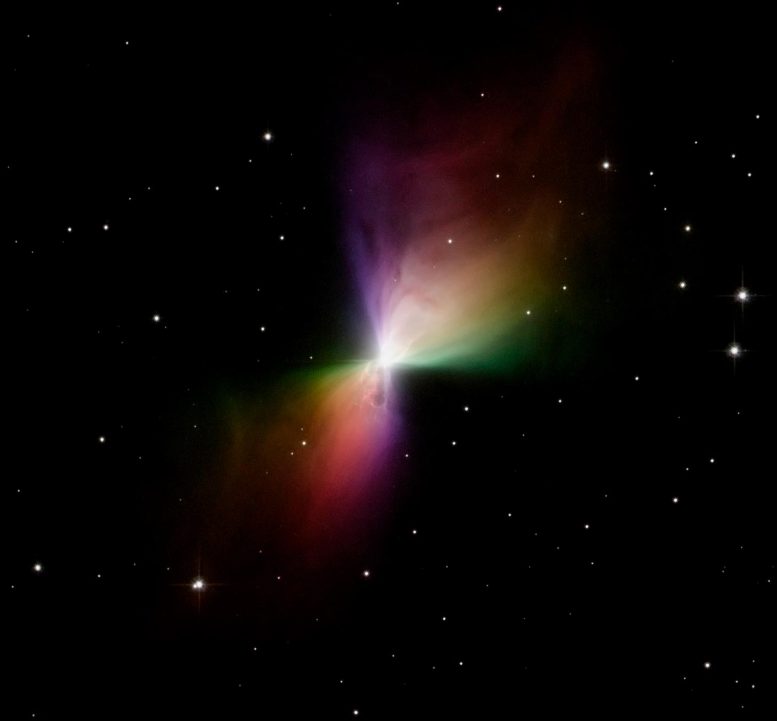
Stunning image of the Boomerang Nebula, captured by the Hubble Space Telescope, utilizing its Advanced Camera for Surveys. Located about 5,000 light years away, this nebula is near-absolute zero temperature. Credit: NASA, ESA, and The Hubble Heritage Team (STScI/AURA)
Hubble has revealed the intricate details of the Boomerang Nebula, a near-absolute zero temperature nebula 5,000 light-years away, showcasing significant matter ejection over millennia.
The Hubble Space Telescope has “caught” the Boomerang Nebula in these spectacular images taken with the Advanced Camera for Surveys. This reflecting cloud of dust and gas has two nearly symmetric lobes (or cones) of matter that are being ejected from a central star. Over the last 1,500 years, nearly one and a half times the mass of our Sun has been lost by the central star of the Boomerang Nebula in an ejection process known as a bipolar outflow.
The nebula’s catchy name is derived from its symmetric structure as seen from ground-based telescopes. Hubble’s sharp view is able to resolve patterns and ripples in the nebula very close to the central star that are not visible from the ground.
The Boomerang Nebula is about 5,000 light-years from Earth in the direction of the Southern constellation Centaurus. Measurements show the nebula has a temperature of only one degree Kelvin above absolute zero (nearly -460 degrees Fahrenheit).
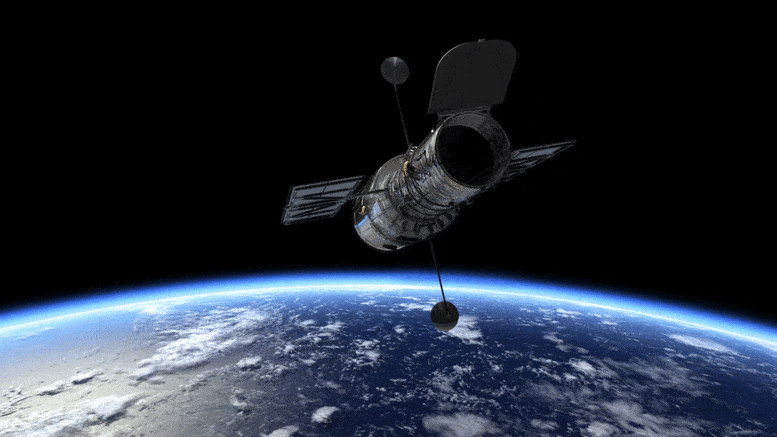
3D animation showing the Hubble Space Telescope over the Earth. Credit: ESA/Hubble (M. Kornmesser & L. L. Christensen)
Often touted for its unique and symmetric appearance, the Boomerang Nebula has garnered significant attention in the astronomical community and has become an iconic subject for telescopic studies. At its heart, the nebula boasts a central star that has undergone dramatic changes, ejecting almost one and a half times the mass of our Sun in a process known as a bipolar outflow over the last 1,500 years. This has resulted in two almost symmetric lobes of matter radiating outwards.
One of the most intriguing characteristics of the Boomerang Nebula is its temperature. The nebula is chillingly cold, registering at just about one degree Kelvin above absolute zero, translating to nearly -460 degrees Fahrenheit. This makes it one of the coldest known regions in the universe, even colder than the background temperature of space. The nebula’s near-absolute zero temperature, combined with its unique structure and the mysteries surrounding its central star, make the Boomerang Nebula a compelling subject of study and a testament to the universe’s endless wonders.

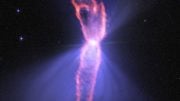
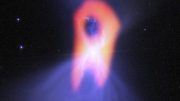
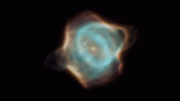
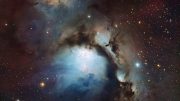
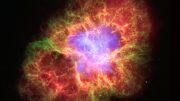
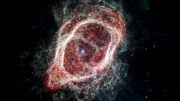
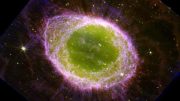

For the record, this image by the Hubble Space Telescope was taken 18 years ago in early 2005. So, it is not exactly current news.
I don’t care when the pic was taken, I’ve never seen it before. It’s spectacularly BEAUTIFUL!! Thanx formincluding it!